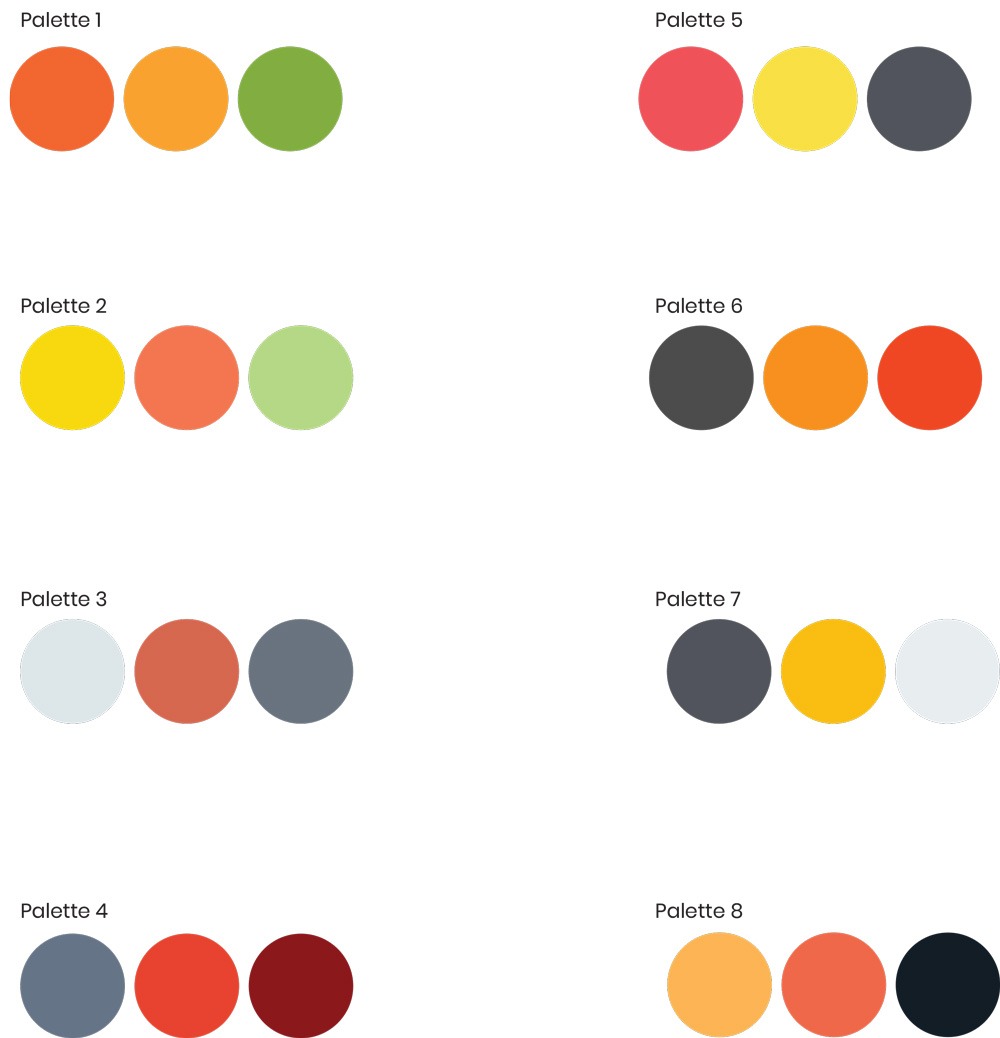A Look at the Psychological Impact of Color Choices on Brand Perception
A Look at the Psychological Impact of Color Choices on Brand Perception
R2 Creative Group has a keen understanding of the impact that colors can have on human emotions and behaviors. The Psychological Impact of color choice within the realms of marketing and branding often give people an immediate reaction. In a world saturated with visual stimuli, making the right color choices can be critical for brands to capture consumer attention. The powerful function of color psychology significantly influences how a brand is perceived in the marketplace.
R2 Creative Group uses colors to evoke a wide array of emotions and associations in our work. These responses can be quite universal, though they may vary by culture. For instance, blue is often associated with trust and reliability, making it a popular choice for financial institutions and tech companies. On the other hand, red can evoke feelings of passion and energy, frequently employed by brands aiming to grab attention quickly or stimulate a sense of urgency.
The Color Wheel: A Gateway to Emotion
Colors have been associated with specific emotions and psychological responses for centuries. Various studies in psychology and marketing have established that colors evoke feelings in consumers that affect their purchasing decisions. Here’s a brief overview of some commonly attributed meanings of colors:
Red: Passion, urgency, and excitement. Brands like Coca-Cola and Netflix enhance feelings of vitality and energy through their use of red.
Blue: Trust, reliability, and calmness. This color is often favored by companies like Facebook and IBM, as it promotes a sense of security and professionalism.
Green: Health, growth, and nature. Brands like Whole Foods capitalize on green to evoke freshness and environmentally-friendly practices.
Yellow: Optimism and happiness. Brands such as McDonald’s use yellow to create a cheerful and friendly atmosphere.
Purple: Luxury, creativity, and sophistication. Brands like Hallmark and Crown Royal utilize purple to evoke a sense of exclusivity and premium quality.
Black: Sophistication and elegance. This color is prevalent in luxury brands and fashion, as seen with Chanel and Gucci, conveying a timeless and chic aesthetic.
When Building the brand and logo for CAP Index, R2 provided a selection of options that evokes the concept of “good” / “medium” / “bad”.

The Psychological Impact of Color Choices on Brand Perception lies in their ability to evoke specific emotions and sentiments, thereby influencing consumer perceptions and behavior. Talk to us–we can help you drive your brand to the right color palette.
The Context Matters
While generalizations about colors provide a foundational understanding, the context in which colors are used plays an equally vital role in shaping brand perception. For instance, while blue denotes trustworthiness, it can also be perceived as cold or distant if used excessively in a brand’s palette. Similarly, red can signify excitement but may also evoke feelings of aggression if not balanced with complementary colors.
When selecting a color palette, brands must consider their target audience, cultural implications, and the emotions they wish to convey. In a multicultural world, it’s crucial to understand that color associations can vary significantly with culture and personal experiences. For example, while white symbolizes purity in many Western cultures, it is often associated with mourning in some Eastern cultures.
The Role of Branding Strategy
Companies often leverage colors as a part of their branding strategy to cultivate specific brand identities. The choice of color goes beyond mere aesthetics; it communicates values, mission, and personality. For instance, eco-friendly brands will opt for earthy tones to reflect sustainability principles, while tech companies might opt for sleek and modern palettes that convey innovation and advancement.
Furthermore, establishing a consistent color scheme across platforms strengthens brand recognition. According to research, consistent presentation of a brand increases revenue by about 33%. Well-known brands like Starbucks and Target have effectively utilized colors in their branding to build enduring identities that resonate emotionally with their customers.
High-end color Palettes and the role they Play in Design
In the competitive landscape of modern business, establishing a strong brand identity is crucial for companies aiming to attract discerning customers and position themselves as leaders in their respective markets. One of the most powerful tools at a brand’s disposal is color. The psychology of color plays a significant role in influencing consumer perceptions and behaviors, particularly for high-end brands that seek to evoke feelings of luxury, status, and exclusivity. The right color palette can communicate a brand’s values, set the tone for customer experience, and create lasting impressions that encourage loyalty.
Effective color choices can elevate high-end branding strategies. When R2 Creative Group was tasked to design the Aurelius color palatte and brand it was important to them that it aligned with it’s mission and target audience.

Whether you are launching a new luxury product or rebranding an existing company, understanding the intricacies of color can help you craft a powerful visual identity that resonates with your clientele and stands the test of time.
Color in UI/UX Design and the Impact of Color Choices
In the digital age, the application of color extends beyond branding to web design, app interfaces, and overall user experience (UX). The psychological impact of color Choices affects user behavior, drawing attention to specific actions or information. For example, a strategically placed red button can spur action — a tactic often used for call-to-action buttons because red elicits urgency. We often use bright orange, like BriteCap to draw your eye and drive specific behaviors.
Moreover, ensuring that color combinations are accessible to all users is crucial. Brands must prioritize inclusive design as an ethical consideration, ensuring those with visual impairments can engage with their offerings. Accessibility tools and guidelines help brands choose combinations that are both appealing and functional for a broader audience.
The Lasting Impact of Color
The psychological impact of color choices on brand perception is a deep and multifaceted subject. Understanding the emotional resonance of colors allows brands to forge stronger connections with consumers and differentiate themselves in a crowded marketplace. As businesses evolve, the strategic application of color will continue to be a crucial element in shaping brand identities and promoting positive consumer interactions.
By analyzing the psychological impact of color choices, R2 Creative Group empowers businesses to cultivate a strong and distinctive identity. Each color carries its own psychological weight, and the strategic use of color can help brands align their visual identity with their core values and mission. For example, a brand focused on sustainability might opt for green hues, suggesting eco-friendliness and a connection to nature, while a luxury brand may lean towards black or gold to convey sophistication and exclusivity.







